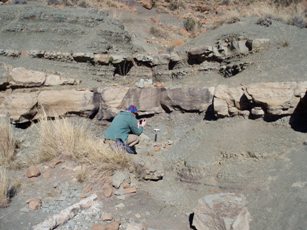
Recovering from the mother of all mass extinctions took 30 million years, say scientists at Bristol University. Dwain Eldred reports.
Geoscientist Online 18 January 2008
The full recovery of ecological systems, following the most devastating extinction event of all time, took at least 30 million years, according to new research from the University of Bristol.
About 250 million years ago, at the end of the Permian, a major extinction event killed over 90% of life on earth, including insects, plants, marine animals, amphibians, and reptiles. Ecosystems were destroyed worldwide, communities were restructured and organisms were left struggling to recover. This was the nearest life ever came to being completely wiped out.
Previous work indicates that some life bounced back quite quickly, but mostly in the form of 'disaster taxa' (opportunistic organisms that fill the empty ecospace), such as the hardy Lystrosaurus (picture), a barrel-chested herbivore, about the size of a pig.
The most recent research, conducted by Sarda Sahney and Professor Michael Benton at the University of Bristol (see this week's Proceedings of the Royal Society B) indicates that specialised animals and complex ecosystems with high biodiversity, complex food webs and a wide variety of niches, took much longer to reappear. In this way, recovery after a mass extinction is comparable to ecological succession, and recovery can be said to be complete when the new ecosystem is stable – a "climax community" in ecological terms.